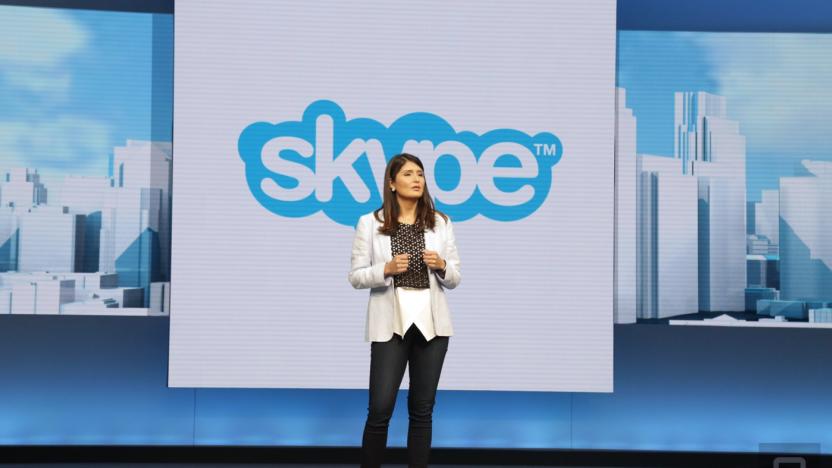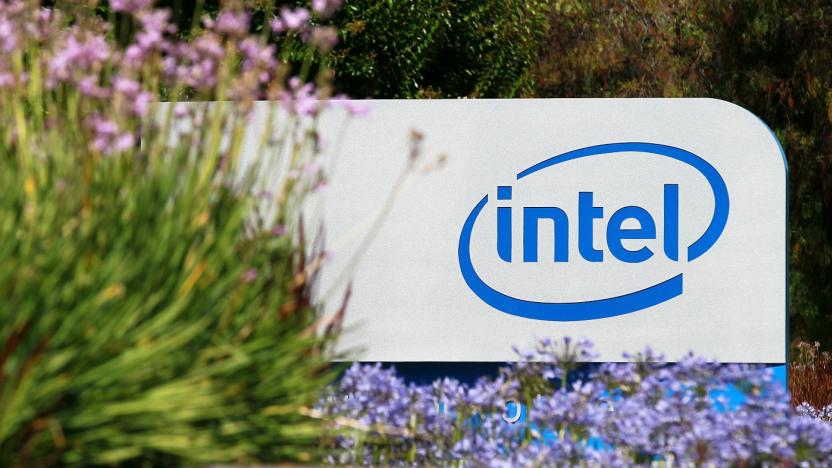timeline16diversity
Latest

Microsoft's diversity should mirror its keynote
At Build 2016, Microsoft offered a glimpse at the company's future. We saw a preview of new universal apps, Linux development within Windows 10, a HoloLens update and its brand new Cortana-fueled AI strategy. But we might have also had a peek at another side of Microsoft, one that is attempting to acknowledge and perhaps overcome its diversity issues.

Intel's diversity report shows change is slow, but important
Intel has made a big deal about its commitment to fostering a more inclusive workplace and now wants us all to see how well it did in 2015. The firm is celebrating the fact that it was just about able to exceed its goal of hiring 40 percent of new employees from diverse backgrounds and plans to push that to 45 percent this year. Overall, women now comprise 24.8 percent of Intel's workforce, up from 19 percent in 2014, with the number of African American, Hispanic and Native American hires generally trending upward. That's not even mentioning the chipmaker's outside projects like teaming up with Lady Gaga to tackle online harassment.

Apple is (very) slowly improving its employee diversity
Apple mildly improved employee diversity this year, but voted against a proposal to improve it where the problem is worst -- the executive suite. According to the company's latest EEO-1 Federal Employer Information (FEI) filing, it had a net increase of 1,475 black employees, 1,633 hispanics and 4,586 women. That bumped the overall percentages slightly for black and hispanic people, while the number of female employees rose from 28.7 to 30 percent. Earlier this year, Tim Cook said that the company hired 11,000 women in 2015, 65 percent more than last year. If that's accurate, then the EE0-1 reports shows that a lot of women and minority employees also left the company in 2015.

Silicon Valley execs highlight tech's equality problem
Silicon Valley is slowly taking steps to address its diversity and equality issues, but oftentimes this problem is spoken as if just hiring from a wider pool of people will solve everything. There is another issue, which is centered around the toxic bro culture that appears to permeate swathes of the technology industry. That's why a group of prominent women decided to conduct a survey that highlights the indignities that they face on a regular basis. The project polled around 200 people, each of whom has at least 10 years experience in the technology industry, and the results make you wonder if we're still living in the 1950s.

2015 diversity report card
It's no question that the tech industry is made up overwhelmingly of men. And as far as ethnicities go, whites and Asians tend to dominate the field. Given the enormous impact of tech on our daily lives, this lack of diversity is troubling. Diversity isn't just about making sure these companies represent the population they serve, it's just plain good business -- studies have shown time and again that a more diverse workforce results in better decisions and increased profits. Fortunately, tech companies realize this too. Last year, several of them released employee diversity reports for the first time, finally revealing to the world just how unbalanced their staffs are. Some also made bold promises to increase employee diversity. In 2015, most of those companies released a follow-up report (Amazon is the one notable exception that failed to publish a follow-up report in 2015. We've reached out for comment and will update if we receive a response). Promises are all well and good, but what really matters is results. For this report, we chose five companies that have proclaimed their commitment to diversity -- Apple, Facebook, Google, Microsoft and Twitter -- but, of course, we know there are more. These are simply the firms we think are the most recognizable and most influential. This is not a comprehensive look at the entire tech industry. It's also worth considering the number of minorities in the U.S. and Canada who are enrolled in computer science degree programs. According to a 2014 study by the Computing Research Association of 121 U.S. and Canadian universities, 4.1 percent of computer science undergraduates were black; 7.7 percent were Hispanic; and 58 percent were white. A total of 86 percent were men. The trend was similar for master's and doctoral programs. The inclusion of Canadian universities muddies the waters somewhat as far as national numbers go, but it does indicate that there's a limited pool of potential recruits. It's clear, then, that the problem has as much to do with the pipeline of new recruits -- how are companies supposed to hire more women and minorities if there aren't any? -- as it does with the industry as a whole. We have to understand and accept that the percentage of eligible recruits doesn't reflect the ethnic makeup of the U.S. in the first place. How we grade First, it's important to see how much the numbers have improved from year to year and if the five big tech companies met their diversity goals. It would be ideal to see the makeup of the companies and their leadership more accurately reflect the population of the country. The CIA World Factbook notes that the world is roughly 50 percent male and female (or a 1.01 ratio) while the gender breakdown of the U.S. is that of a 1.05 ratio, which means there are slightly more men than women. The ethnic breakdown of the U.S. is: .tg {border-collapse:collapse;border-spacing:0;}.tg td{font-family:Arial, sans-serif;font-size:14px;padding:10px 5px;border-style:solid;border-width:1px;overflow:hidden;word-break:normal;}.tg th{font-family:Arial, sans-serif;font-size:14px;font-weight:normal;padding:10px 5px;border-style:solid;border-width:1px;overflow:hidden;word-break:normal;}.tg .tg-yzt1{background-color:#efefef;vertical-align:top}.tg .tg-yw4l{vertical-align:top} White Asian Hispanic Black Mixed Other USA population 79.96% 4.43% 15.1% 12.85% 1.61% 1.15% We're also taking into account any initiatives or programs tech companies have implemented to help rectify the diversity gap in both their companies and the community at large. A more aggressive push would generally result in a higher grade, as would a strong public stance. Here's how we'll break down the grading: A third of the score will be based on how diverse the company is currently. Another third will be based on the company's efforts to diversify its workforce. The last third will be based on what efforts, if any, the company is making to create diversity at large in the industry. Disclaimer We recognize that our grading system isn't perfect. But that's mostly because it's based on imperfect circumstances. No, none of these companies hire enough women and traditionally underrepresented minorities. But that's also partly because of the "pipeline" problem that makes it difficult to find qualified recruits who are members of these groups in the first place. This is why we're putting so much emphasis on companies' intention to diversify the future, not just the present. It's also worth noting that while we're using the percentage of computer science graduates as a benchmark for tech jobs, we recognize that there are also women and ethnic minorities who are tech-industry veterans who may not be gainfully employed at these particular companies. Therefore the pool of available candidates is potentially much larger than what's reflected here. Additionally, all of these firms filed Equal Employment Opportunity reports (EEO-1) for 2014, but have not yet done so for 2015, as EEO-1 reports are usually filed for the previous year. The numbers for 2015 have therefore been culled from the companies' own websites and not from the government mandated EEO-1 reports. EEO-1 reports are typically not made public, but these tech companies have chosen to make them known for transparency's sake. Additionally, Apple and other companies have noted that the EEO-1 employment classifications have "not kept pace" with the times -- the EEO-1 differentiates between "professionals" and "technicians," for example, whereas in a lot of tech companies, the lines between the two blur. In all instances, gender data is global while ethnicity data is US only. This is simply how all companies track this data as a general rule. [Image credit: Shutterstock]

Developer diversity changes the way video games are made
In 2003, BioWare developers working on Star Wars: Knights of the Old Republic hid a fact about one of the game's characters from their own marketing team. This character, the Jedi Knight Juhani, happened to be female and she also happened to be gay. Developers weren't sure how players would receive that trait. "I think for a long time it was just assumed that nobody would accept it," BioWare lead writer David Gaider said in 2013. Even in the final game, Juhani's sexuality is vague. "We kind of hid it," Gaider continued. "She never says, 'She was my lover.' She just says, 'We are very close.'"

Tech has a diversity problem, and that problem is culture
I've heard it before and so have you. We need more women in tech. We need more minority engineers. Everyone from Jesse Jackson and even President Obama has made a call for more inclusive policies in tech companies. But it still hasn't happened. You need only look at the recent numbers released by Google, Facebook and Apple to see that white men still top the charts when it comes to their employee count. It all seems hopeless. Leslie Miley, who was the only black engineer in a leadership position at Twitter up until a couple of weeks ago, must have felt so too. In a blog post on Medium, he explained that he left the company because he felt defeated in his efforts in trying to increase and encourage company diversity. The problem: Culture.

New website showcases profiles of people of color working in tech
One way to address the lack of diversity in tech is to expose kids to computer science as early as possible. That's exactly what Ruth Mesfun is doing. She studied how to teach CS, so she could conjure up a curriculum and launch a new class for the Excellence Girls Middle Academy, an all-girls, majority-black middle school in Brooklyn. She has also created a website called "People of Color in Tech" with her developer friend Michael Berhane, so her kids can find role models to look up to. The website features interviews of engineers, designers and other people of color in the industry, and Mesfun and Berhane hope to to add two more profiles every week.

Apple team-up promises more diversity among tech interns
Apple knows that improving the diversity of its workforce doesn't just depend on hiring more workers, or dishing out scholarships -- it also has to recruit a wider range of interns that could eventually become permanent staff. To that end, it's partnering with the career accelerator Code2040 to offer paid internships to black and Latino college students. Apple will start by taking on 10 of the 80 computer science fellows in Code2040's 2016 class, and will pick up two more interns beyond that.

White House Demo Day focuses on diversity
When the White House hosts a Demo Day, tech entrepreneurs come out to play. The Obama administration kicked off its first ever showcase for startups today. It isn't your typical day of demonstrations and matchmaking that brings entrepreneurs closer to prospective funders. Instead, it's about pushing for much-needed diversity in the largely homogenous tech world. As such, the innovators showcasing their stories directly to POTUS come from diverse backgrounds. According to the site, "these stories exemplify how we can 'grow the pie' by including all Americans in our innovation economy."

Tim Cook says diversity is the future of Apple
Tim Cook has pledged that Apple's future won't be as white and male as it has been in the company's past. The CEO sat down with Mashable in advance of the WWDC keynote to say that diversity is the "future of our company." It's not just hand-wringing that has prompted his attitude, since he believes that "the most diverse group will produce the best product." The executive has added that the tech community needs to work a lot harder to show women that the industry is "cool" and "how much fun it can be."






